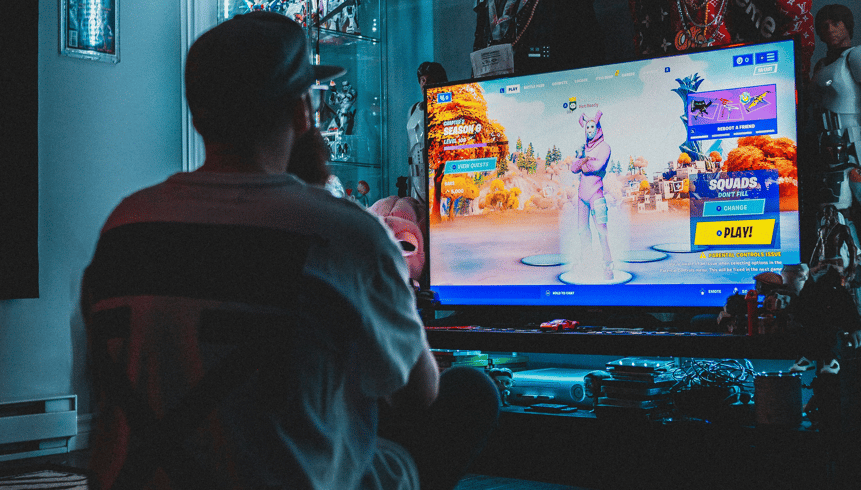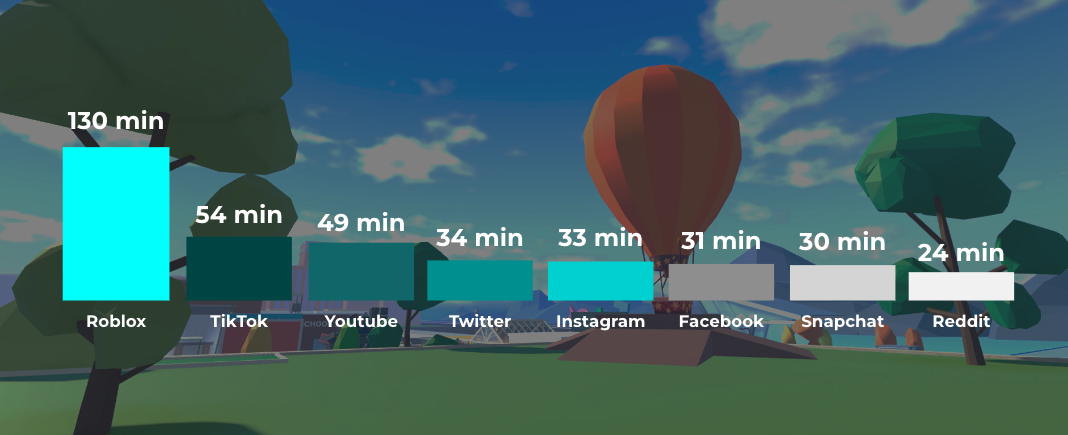- Newsroom
- >
- How Can Advertisers Engage Players in the Console Gaming Community?

How Can Advertisers Engage Players in the Console Gaming Community?
When we picture gamers, console gaming is likely what first comes to mind. Many of us have probably been introduced to the joys of gaming with a controller in our hands. And while popular games are now accessible on just about every device imaginable, ranging from our mobile phones to virtual headsets, it’s still consoles that host many of the world’s best-loved and premium franchises, ranging from Grand Theft Auto, Call of Duty, The Elder Scrolls, The Last of Us, Elden Ring, The Legend of Zelda, and more.
Given console gaming’s deep history (with the first in-home device released in 1972), loyal communities of players have existed for nearly half a century. Functionalities added to console games in later years, including online multiplayer capabilities, chat features, and audio headsets, then made it easier for diverse groups of people to share their experiences and form wider communities in-game.
Like console gaming, advertising within games (including in-game product placements) is not a new invention. However, the current size and scale of the console community, coupled with the massive social spaces that now exist within them, offers an invaluable opportunity for advertisers to connect with a highly engaged, diverse, and widespread audience that is bigger than ever before. To date, there are an estimated 301 million players on major consoles globally and the overall market is projected to surpass $34bn by 2030.
The console gaming community is bigger and better than ever before
Even before the wider release of the internet, people found ways to share their love of console games. As home gaming boomed in the late 1970s and early 1980s, hobbyist magazines of the time created a sense of community among gamers and offered channels for them to further engage with one another. In the 1990s, gaming communities widened across dedicated online forums and websites, allowing players to receive news, offer tips, and share cheat codes with others across the globe.
Within the last decade, technological advancements have allowed greater potential for interaction and community-building within console games — including the ability for people to play online, curate teams, and interact using audio headsets, HD cameras, or other built-in applications (such as microphones and speakers found on PS5 controllers, which have made communication between players more seamless).
Integrated chat features in today’s games have also created social spaces for players to converse and form friendships. Popular free-to-play titles available on console, including Fortnite, Fall Guys, Call Of Duty: Warzone, Destiny 2, Apex Legends, and Rocket League, have millions of gamers worldwide and have played a massive role in helping online multiplayer games gain traction across the console community.

Additional developments have also allowed wider demographics to meet in games, such as the introduction of cross-platform play and community-driven platforms (such as Fortnite, Roblox, and Minecraft) being added to console lineups. In previous gaming eras, PlayStation owners couldn't connect with Xbox or PC players using the same title. Today, players are no longer constrained to just one console in order to tap into a particular community (in 2022, 72% of PC and/or console gamers reported using at least two platforms).
Console gaming has an unrivaled loyal audience
The long heritage of console gaming also makes its community unique among all gaming groups. Many publishers have released hundreds of games for consoles across the span of several decades, including titles from some of gaming’s best-known franchises — such as Super Mario Bros (which has sold a total of 832m copies worldwide and is the highest-grossing video game franchise of all-time), Pokémon (which has grossed 480m worldwide), Grand Theft Auto (which has grossed 410m), Call of Duty (which has grossed 425m), and FIFA (now EA Sports FC, which has grossed 325m), Final Fantasy (which has grossed 180m), Sonic the Hedgehog (which has grossed 160m), and The Legend of Zelda (which has grossed 150m).
As a result, these games are backed by some of the biggest and most loyal fanbases, which have brought together millions of people from across the globe over a shared passion. These fandoms are supported by robust communities and several online and in-person events for fans to connect and build relationships. Pokémon and The Elder Scrolls, for instance, have fan meet-ups listed on their official websites — while other developments, such as industry trade conferences, gaming conventions, and cosplay opportunities, are extremely popular with fans of console games.

Within the last few years, esports has also exploded in popularity — especially as more people tuned in during a lack of in-person sports during lockdowns. This gave rise to another tight-knit community (and greater opportunities for brand partnerships within gaming). Similar to sports fandoms, many esports teams now have dedicated forums and online groups where people can connect and discuss their favorite games and players. Esports fans can also come together to watch professional players compete in in-person tournaments.
Brand loyalty is vital for marketers looking to build meaningful customer relationships. As console gamers have shown us that they are likely to display loyalty towards particular titles or franchises, this should make them an ideal target audience for brands looking to drive repeat business and long-lasting impact with consumers.
Many unique forms of interaction, such as memes, inside jokes, and other special types of content, have been formed within console gaming communities. These communication methods not only serve as ways for players to share positive interactions but also present ways for marketers to speak their language and successfully tap into their audiences. For example, a recent campaign launched by Sky Broadband invited streamers to play Street Fighter 2 inside a giant hotbox, serving as a playful depiction of gaming culture's definition of a “sweaty gamer” (a term commonly used by gamers to describe someone who tries too hard).
Gaming platforms are the new social media for younger demographics
Due to the communal spaces that now exist within games, an increased number of younger players are now socializing more in-game than on popular social media platforms. A recent study found that under 25s spend an average of 130 minutes a day in Roblox vs. 54 on TikTok, while a Deloitte survey found that 40% of Gen Z and Millennials socialize more in games than in the physical world.

Statista (U.S. user's daily engagement with leading social media platforms 2022)
Social platforms that cater specifically to gaming audiences, including Twitch and Discord, have also become popular with console gamers and made community-building easier and more accessible for both players and marketers looking to reach them.
Twitch, which has over 140m monthly active users and sees an average of 2.6m channel views per day, has become a platform for gamers to effectively network and interact with other players and streamers. Discord, which has 150m monthly active users, also allows users to communicate through text, voice, or video chat and socialize on channels or servers — many of which are dedicated to specific console games or gaming genres.
Gaming plays a positive role in social interaction, which can help advertisers drive engagement levels
Research has shown that gaming isn’t just effective in helping people build relationships and social connections — it’s also linked with positive psychological benefits, where players have reported feeling happier and more confident as a result of connecting with others in-game.
In one study, 89% of respondents cited games as a way for diverse types of people from different cultures, races, ages, and affiliation to unite over a shared interest. Another study found that engagement within online multiplayer communities led to players having higher self-esteem, increased social competence, and lower levels of loneliness.
This means that advertisers can benefit from targeting an audience that is not just highly engaged, but also in the midst of an activity they enjoy and that gives them a sense of belonging. This dynamic presents a vital opportunity for marketers to help players create a positive association between their brand and the game. If intrinsic in-game ads can be used to command attention from happy players without disrupting their gameplay, this also presents greater chances for brand recall and awareness.
What can advertisers learn from the console gaming community?
The console gaming community is one of the largest and most tight-knit, engaged, and diverse audiences in the world, with unique ways of interacting both in-game and across dedicated platforms.
As social circles continue to expand within console games, their ecosystems are a logical place for advertisers looking to launch campaigns that will reach untapped audiences. Advertisers that tap into the console community and learn its behavioral shifts can benefit from its social aspect, finding ways to connect with players in authentic and meaningful ways that can drive brand loyalty and overall long-term success.
As in-game ads continue to be trialed within console games, discussion about their impact among gaming groups has also increased. Given the size and scale of the console community, this means there is opportunity for wider dialogue about their effectiveness — and if they are placed right contextually and creatively, this also gives way for positive feedback and brand outreach to extend across the larger gaming population.